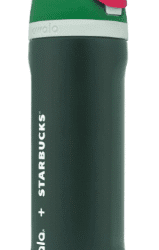Following today’s release of JD Sport’s figures for the 13 weeks ending 2 August 2025; Louise Deglise-Favre, Apparel Analyst at GlobalData, a leading data and analytics company, offers her view: “JD Sports’ performance in Q2 FY2025/26 worsened slightly compared to Q1, with organic sales growth slowing 0.9ppts to 2.2% and like-for-like (l-f-l) sales growth falling 1.0ppts to -3.0%. For the H1 period in total, organic sales rose 2.6% and l-f-l sales dropped 2.5%. Though this partly reflects wider struggles within the sportswear market as consumers’ budgets remain tight amid macroeconomic volatility, there are also weak spots within JD Sports’ assortment. The group has reiterated that the direct impact of tariffs on its operations should be negligeable, while remaining cautious about indirect impacts, as some of the brands it stocks will likely raise prices. While the group has not provide specific guidance on its full-year sales performance, it expects its profits before tax and adjusting items to be in line with market expectations, landing between £852m and £915m.
“Organic growth in Q2 for the JD fascia alone rose 2.8%, thanks to the opening of new stores, while l-f-l sales fell 3.9%, which the group partially blames on strong comparatives in the UK and Europe due to the Euros football tournament last year. However, JD’s assortment will have also been to blame, due to its heavy reliance on Nike, which has been struggling due to a lack of innovation. JD’s ranges also remain quite streetwear focused, preventing it from fully benefitting from pockets of growth within the muted sportswear market, such as performance footwear and elevated athleisure. JD will have also suffered from the diversion of spend towards direct-to-consumer channels especially for in-demand brands such as On, Hoka, Vuori, Alo and Lululemon. The group’s Complementary Concepts fascia saw its organic sales rise 3.6% and l-f-l sales grow 0.3%, thanks to the resilience of DLTR in North America. The Sporting Goods & Outdoor fascia’s organic sales fell 1.6%, similar to its l-f-l sales decline of 1.7%, as demand slowed for outdoor sportswear.
“Asia Pacific was JD Sports’ best performing region in Q2, with l-f-l sales growing 0.3%, while organic sales rose 9.3%, thanks to store expansion and the recovery of economic conditions in China. In Europe and North America, l-f-l sales fell 1.1% and 2.3% respectively, while organic sales rose 5.4% and 4.8% respectively, highlighting the clear positive impact of store openings, with new JD flagships in Las Vegas and Central and Eastern Europe. The UK remained the group’s worst performing region, with l-f-l sales falling 6.1%, while organic sales dipped 4.1%, as the UK retail market remains extremely challenging, making it a struggle to capture consumer interest, despite the opening of JD’s largest ever store in Manchester in early June.”







